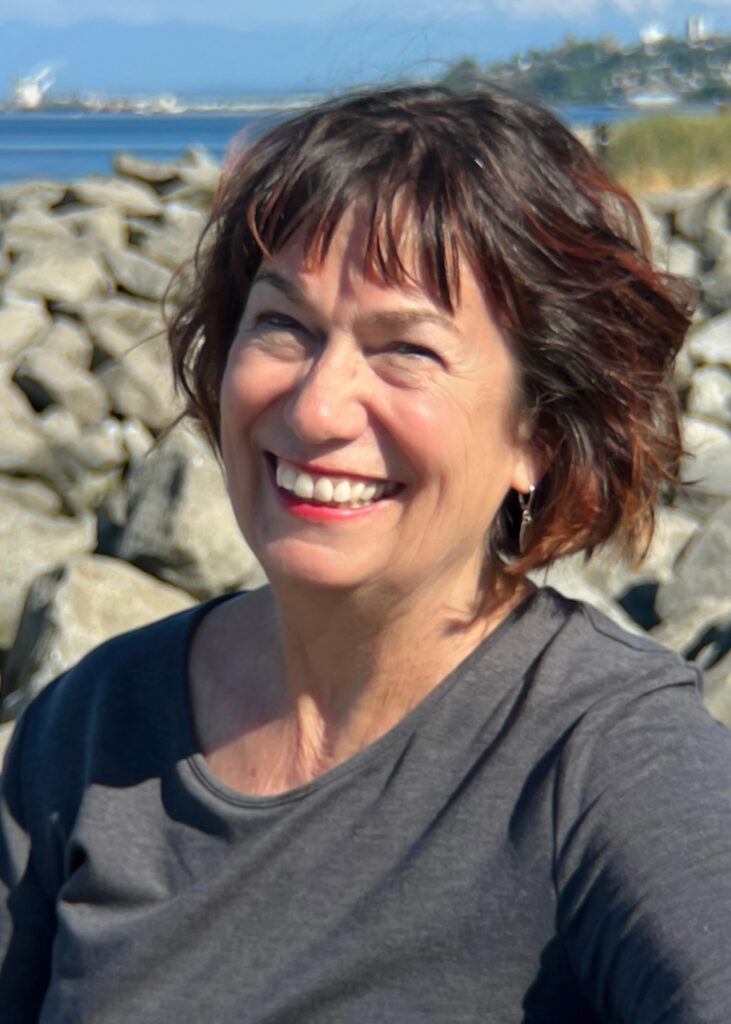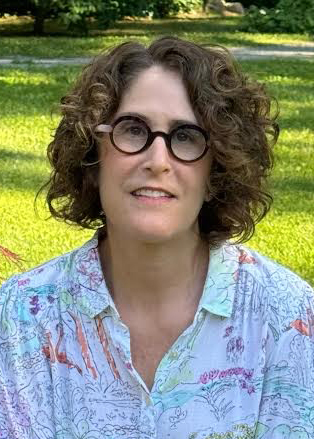In the Developing Field of Climate Psychology, ‘Eco-Anxiety’ Is a Rational Response
Elena can pinpoint the exact moment her climate distress began to overtake her life.
“I can remember … just laying in bed with my sister, and we’re both crying, and my sister saying, ‘I’m not having kids now, like, there’s no way,’” says Elena, describing their reaction to Australia’s May 2019 election. “I think this made up my mind, things aren’t gonna be OK.”
Elena, who is from Tasmania, Australia, says her climate distress only increased with the country’s 2019 Black Summer fires. (For this article, Elena and others in therapy spoke with the understanding that only their middle names would be used because of the sensitivity of the subject matter).
At the time, Elena was pursuing a Ph.D. in plant biology and felt comforted by the notion that her work could one day help with climate change. But all that was put on hold when the eucalyptus plot she was assigned to for dissertation experiments caught on fire.
Around this time, Elena began seeking treatment for her anxiety, not just for climate, but for other areas of her life as well. The therapy, which included cognitive behavioral therapy (CBT), helped with aspects of her generalized anxiety. But it never seemed to help with her climate anxiety.
Explore the latest news about what’s at stake for the climate during this election season.
Leslie Davenport, a leading voice in the developing field of climate psychology, the author of All the Feelings Under the Sun, says that’s because eco-anxiety is a “completely natural response” to climate change.
CBT was designed to help people with distorted cognition, especially when they have lost perspective in one area of their life. According to Davenport, a practicing therapist based in Tacoma, Washington, CBT’s strength is its ability to help people sort through their thoughts and figure out where their perception may have become distorted, and what feelings and actions stem from that.
But this doesn’t work for eco-anxiety because climate distress is inherently logical. It comes from a place of empathy for others and a world that they recognize is “in really big trouble,” Davenport says.
In Davenport’s experience, it’s best, when dealing with eco-anxiety, to start from a place of validation by acknowledging how serious and complex a problem climate change is and recognizing that it is getting worse. The intractable nature of climate change is a large part of why CBT is often ineffective for climate distress, she says.
“Because it normally deals with not only someone with some sort of a distorted sense of things, but often problems that have sort of a beginning, middle or an end, right? So we’ve got the problem, we kind of work with it, and even if there’s some ongoing stressors, there’s more of an arc that comes back towards something manageable,” Davenport says. “With climate change, we are on this escalating arc where we, no matter how skilled we are, including those of us who devote our professional life to the psychological parts, are going to have to learn how to manage with higher levels of distress as we live through and witness more. And I don’t think CBT has ever conceived of addressing that.”

Her job is to help people create their own mindfulness-centered “self care toolbox,” as she calls it. What works to ground one person won’t work for everyone. “For one person, doing yoga or meditating might work, but for somebody else, they might need to go for a run,” says Davenport. And for one client, a 13-year-old girl who struggles with climate anxiety, what works best is skateboarding.
Davenport searches for the things that will ground her clients in their physical bodies, require deep focus and allow them to enter a state of flow. But she can’t “just prescribe skateboarding.” Davenport has an individualistic attitude towards therapy and sees her role as a guide, helping clients find the approach to mindfulness that works for them.
“So often people know what will help them feel better, reset, take a break, come back to some kind of emotional baseline, but they just don’t practice it,” Davenport says.
Elena struggled for years in Tasmania with therapists who never seemed to understand her climate anxiety. Only in the last few months, since beginning therapy with a climate psychologist based near the University of Michigan, where she is now a postdoctoral fellow, has she come to the realization that many standard forms of therapy often can’t be applied to climate anxiety.
Climate “requires a whole new toolset,” says Elena. “No wonder I have been struggling to deal with this.”
‘Not Catastrophizing’
Austin, Texas-based clinical psychologist Charles Couchman rarely uses CBT in his climate-focused private practice. “CBT is so much about managing symptoms,” says Couchman. This can be incredibly useful for people with unfounded fears who benefit from a new reference point or perspective, but it won’t help people connect with their active feelings.
Couchman is “definitely an advocate of some form of therapy that helps people connect with their aliveness and their power and to do something with it, and not just manage symptoms. Symptoms that are being caused by the world we live in, which needs changing.”
But some symptoms, such as sleeplessness, inability to concentrate on anything that isn’t climate related, and constant nausea and headaches, to name a few, can be overwhelming, he acknowledges. Sometimes, people need a way to shut out the mental noise.
Another Austin psychologist, Anna Graybeal, also sees the limitations of CBT in dealing with climate anxiety. She lists her practice with two groups of climate-aware therapists that have been created over the past five years, the Climate Psychiatry Alliance and the Climate Psychology Alliance North America.
It is important to note that though the directories overlap, some providers are listed on one but not the other, so if one directory has no providers listed in your area, it is worth checking the other.
Sometimes, clients would only find Graybeal after having a bad experience trying to talk about climate anxiety with another therapist.
When new clients were hesitant to talk with her, often it turned out “they had a previous therapist who just basically told them, ‘you’re catastrophizing. This isn’t that bad, you’re just overreacting,’” says Graybeal. “And that’s ridiculous. The person is not catastrophizing. It really is that bad.”
There is a common misconception around certain forms of therapy, particularly CBT, that it can “cure” you of anxiety with just a few worksheets and 10 weeks of effort, but that narrative discounts the logical concern that Graybeal’s clients wrestle with when confronted by climate change.
With the incessant heat and repeated hurricanes of the last few years, some clients have begun to question if it’s time to leave Texas for somewhere cooler where the weather is less intense. Graybeal doesn’t believe it is her job to alleviate these clients’ concerns.
“It feels like our culture thinks that the role of therapists is to help people feel better, and I actually think it’s exactly the opposite. Our role is to help people get more comfortable being uncomfortable, and sitting with difficult feelings,” she says.
Graybeal can empathize. She too wonders about the future of Austin in a warming world.
Group Talk on Climate Change
One intervention recommended by more than a dozen climate psychology experts interviewed for this article was involvement in a climate support group.
According to therapist Elizabeth Greene, whose practice is in Manhattan, whether it’s group therapy or a support group offered through the Good Grief Network, the Work That Reconnects or a climate cafe, some people need a group forum.

“There are a lot of people who say, ‘My friends don’t think about this. … I feel alone, or my family are climate change deniers, and I feel like I’m an outlier.’ And a group does so much to undo that feeling,” says Greene.
But, Greene explained, group work isn’t the right fit for everyone. Some people may find it overwhelming, have trouble speaking in groups or just want something different, so both group and individual therapy have a role in climate psychology.
In her own practice, Greene relies on a combination of approaches, including somatic psychotherapy, which focuses on where and how feelings manifest in the body, and how better awareness of the connection between emotions and the body can heighten self awareness and help pin down emotional triggers.
Accelerated experiential dynamic psychotherapy (AEDP) is central to her work. It focuses on facilitating and enhancing the client’s ability to form secure attachments by modeling a secure attachment relationship in the therapist-client relationship. Though this might not seem directly connected to climate distress, Greene explains, “People who are securely attached tend to believe that they can work through things. That’s really, really important when it comes to climate. There’s so often a sense that this is overwhelming, and we’re all doomed, right? But people who are more securely attached can focus more on some of the positive, more hopeful possibilities for change.”
Greene has also found that some of her patients benefit from what she calls “walking therapy.” For clients struggling with eco-anxiety, she has found that taking some of their sessions outdoors allows her clients to focus on the nature that is accessible to them and clarify what is driving their distress.
Given that Greene is based in Manhattan, wilderness isn’t exactly an option. She and her clients make do with Central Park.
No Longer Feeling Alone
For Jan, who lives in Southeast Michigan, the acknowledgement that her fears were valid and far more common than she realized came as a revelation. Prior to starting therapy, she felt like she was the only one in her community who cared about climate action.
Though Jan had been aware of the climate crisis for many years, her concerns started interfering with daily life in 2021, when she found herself unable to sleep. Jan would lie awake at night and just “think about how useless this all was. How dangerous the world is going to be … and how many people are going to die. People are going to die and it’s happening right now,” Jan says.
And “the worst part of this is feeling like you’re the only one who sees it,” she says. “Everyone says the frog in the pot doesn’t know it’s boiling until it’s already dead. And I’m like, no, no, no, I’m the frog in the pot that says we’ve all got to get out of this thing. Are there any other frogs in this pot with me?”
When Jan began seeing her therapist, suddenly she felt like she was no longer the only one seeing the dangers of the climate crisis. “The best part of this is that you have therapists who are there to be like, ‘You’re not the only frog who thinks this pot is suspicious,’” Jan says.
“The worst part of this is feeling like you’re the only one who sees it.”
As the climate crisis intensifies, more people will find themselves confronted with a terrifying and uncertain future. Jan has found ways to work for climate solutions in her own community and beyond. Though she still struggles with eco-anxiety, she is no longer paralyzed by it.
As more people grapple with climate distress, she wants them to know, “you’re not the only one who sees this, and you’re not the only one who’s scared. … There are people who are interested in helping you through this period and holding your hand.”
Jan adds, “The job here isn’t to be so comfortable with everything that you’re just going to deal with things the way they are. You have to retain a little bit of concern to give you the ammunition to keep going and to push forward and be better.”
About This Story
Perhaps you noticed: This story, like all the news we publish, is free to read. That’s because Inside Climate News is a 501c3 nonprofit organization. We do not charge a subscription fee, lock our news behind a paywall, or clutter our website with ads. We make our news on climate and the environment freely available to you and anyone who wants it.
That’s not all. We also share our news for free with scores of other media organizations around the country. Many of them can’t afford to do environmental journalism of their own. We’ve built bureaus from coast to coast to report local stories, collaborate with local newsrooms and co-publish articles so that this vital work is shared as widely as possible.
Two of us launched ICN in 2007. Six years later we earned a Pulitzer Prize for National Reporting, and now we run the oldest and largest dedicated climate newsroom in the nation. We tell the story in all its complexity. We hold polluters accountable. We expose environmental injustice. We debunk misinformation. We scrutinize solutions and inspire action.
Donations from readers like you fund every aspect of what we do. If you don’t already, will you support our ongoing work, our reporting on the biggest crisis facing our planet, and help us reach even more readers in more places?
Please take a moment to make a tax-deductible donation. Every one of them makes a difference.
Thank you,
David Sassoon
Founder and Publisher
Vernon Loeb
Executive Editor
Share this article
Disclaimer: The copyright of this article belongs to the original author. Reposting this article is solely for the purpose of information dissemination and does not constitute any investment advice. If there is any infringement, please contact us immediately. We will make corrections or deletions as necessary. Thank you.
Title:In the Developing Field of Climate Psychology, ‘Eco-Anxiety’ Is a Rational Response
Url:https://www.investsfocus.com




